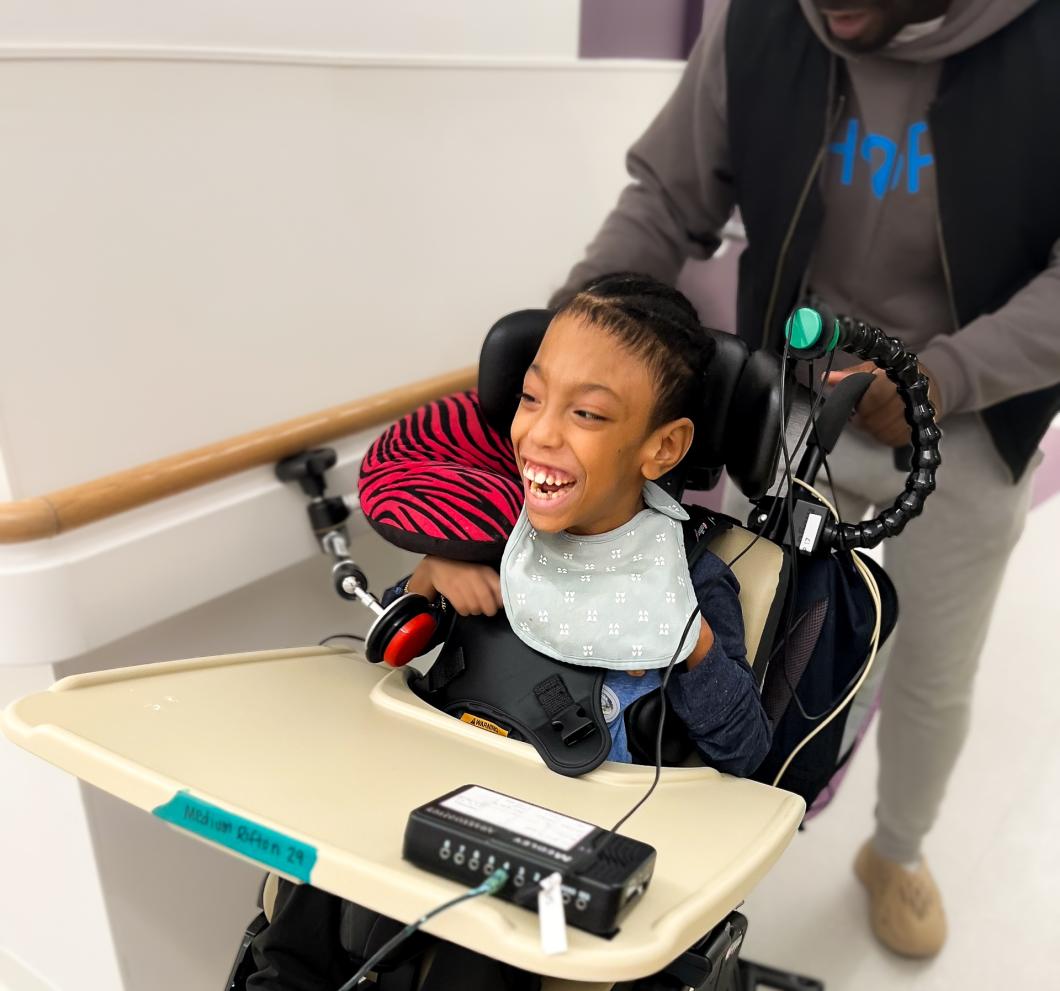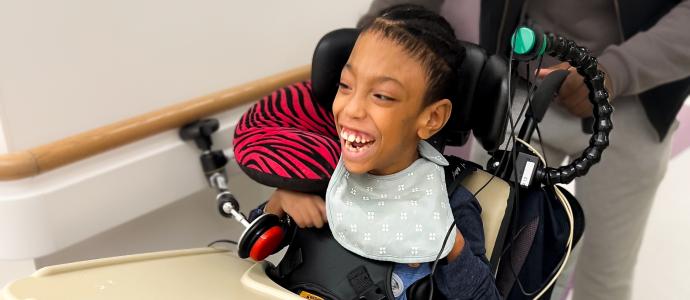Share
Aiden loves the classroom and especially looks forward to writing class with his teacher, Melanie Melendez. During one of his recent lessons in October, Aiden decided he wanted to write about Halloween.
He, however, like the other students at the International Academy of Hope (iHOPE), a YAI affiliate school in Manhattan that serves students with traumatic brain injuries, is not a conventional writer and does not use the typical pen-to-paper method. Due to his significant disabilities, which include being non-ambulatory, nonverbal, and visually challenged, the eight-year-old relies on his alternative pencil to give him access to literacy.
An alternative pencil is a type of assistive technology that gives a student access to the whole alphabet for writing in a way that doesn't require an actual pen or pencil. For example, an eye gaze device with an onscreen keyboard or enlarged keyboard can be used for students with difficulty using their hands. A print flip chart or tablet-based onscreen keyboard may be helpful for students who are learning to use switches. Similarly, braille letter blocks can be a powerful tool for students who are blind. iHOPE employs all of these and other alternative pencils to meet each learner’s unique physical and vision abilities.
Prior to attending iHOPE, the majority of students at the school had very limited exposure to the full alphabet, much less writing in general. Because of this, the school focuses on building early emergent writing skills, such as learning what it means to be a writer, how to use an alternative pencil, and realizing that writing is purposeful and about sharing ideas.
“Historically and even currently, people have said that this population of kids aren’t ready for writing, but if we never give them a chance to learn it in a way that accommodates their individual needs, they are going to have great difficulty developing this very fundamental literacy skill,” said Gretchen Hanser, Director of Assistive Technology & Literacy Instruction at iHOPE. “However, at iHOPE, staff have high expectations and have embraced the idea of giving our students access to alternative pencils.”
Since 2018, Hanser has helped lead current best practices in comprehensive literacy instruction for this population of students, which includes writing with alternative pencils.

Although statistics on the importance of alternative pencils are limited since the tool first came out in 2005 from the Center for Literacy & Disability Studies at UNC-Chapel Hill, research in emergent literacy for children with complex communication and physical needs suggests that this population benefits from the same literacy activities used with typically developing children.
“Giving students access to this kind of assistive technology can really change their quality of life and give them a chance to develop as writers, from learning to first scribble, to identifying letters, putting together letters to form pseudo words, and eventually doing early sound spelling,” said Melanie Melendez, Senior Special Education Teacher at iHOPE. “Alternative pencils empower students like Aiden and give them the confidence that they too can share what they have created with the world.”
Aiden’s alternative pencil is a flip chart with a set of five enlarged print letters on each page. The background of each page is black, and the letters are neon green. This sharp contrast supports his vision and helps him focus on the letters. Melendez verbally goes through each letter on the pages, asking him if he wants to choose one. Aiden can answer either “yes” or “no” using the switches on his wheelchair. The “yes” switch is near his hand and once he taps it, his voice-activated communication device will say it out loud for him. His “no” switch is located near his head and can be activated when he rotates his head and taps it. Once he selects a letter, his teacher writes it.
“In the beginning when I started working with Aiden about two years ago, he was selecting letters randomly like kkk, bbb, ccc, but with instruction and opportunities, he’s now able to select letters with more intentionality and can identify sounds of half of the alphabet,” said Melendez. “He has so much to say, and access is the catalyst for him to really express what he knows. I can see him making approximations of words in the future, and that kind of progress is really amazing considering how much he has to overcome on a daily basis.”
“Through collaboration and integration of writing with alternative pencils into the curriculum, we have had great success and are seeing our students develop as writers,” said Hanser. “It's incredibly exciting. It’s also exciting to share this in our field and for iHOPE to show professionals at other schools that writing is possible and necessary for our population of students."

